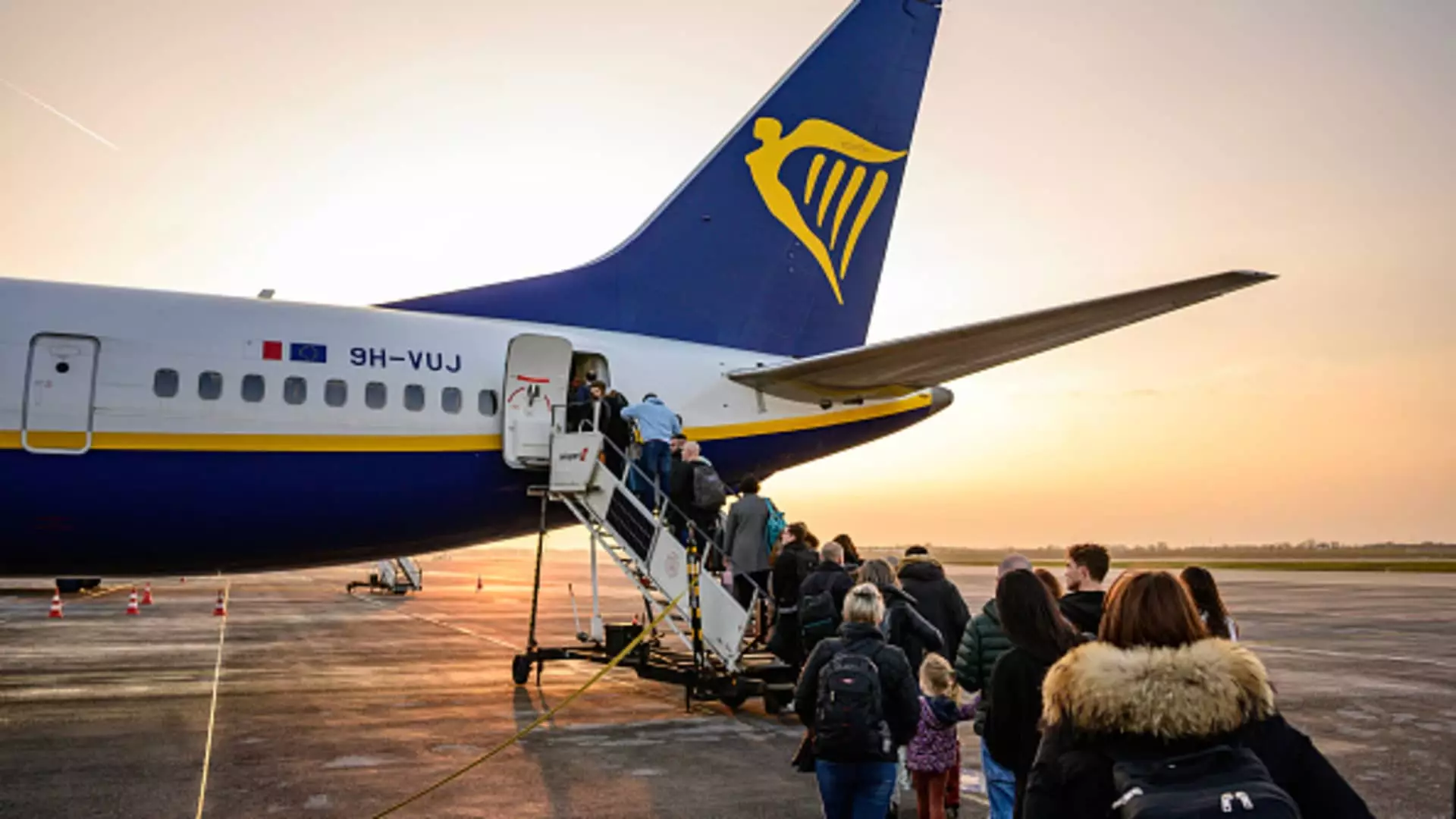Ryanair, Europe’s largest budget airline, has unveiled a surprisingly robust after-tax profit for the quarter ending in December, demonstrating its financial resilience amid significant operational challenges. As the company reported an after-tax profit of €149 million ($155.8 million), it surpassed analysts’ projections significantly; the expectation was a modest €60 million for this period. The airline attributed its strong performance to increased ticket prices during the busy Christmas and New Year travel season, which has helped accommodate an impressive 9% rise in passenger traffic, amounting to 45 million travelers, despite ongoing delays from Boeing.
However, the bright financial picture is accompanied by a troubling narrative: Ryanair is reducing its passenger traffic forecasts for the fiscal year concluding in March 2026. The airline’s ambitions of reaching 210 million passengers have been adjusted downward to 206 million, reflecting the ongoing complications faced in fleet expansion due to delays from its key aircraft supplier. Originally, there was hope for an exuberant target of 215 million passengers, but that was slashed further back in November, underlining the continuous upheaval in operations.
Ryanair’s decision to revise the passenger traffic forecast speaks volumes about the current aviation landscape’s volatility. The delays from Boeing, exacerbated by production challenges, are not just an inconvenience; they alter the operational strategies of airlines reliant on specific aircraft models. Ryanair’s Chief Financial Officer, Neil Sorahan, expressed cautious optimism about future bookings, particularly for the upcoming summer seasons. However, he acknowledged that achieving the original traffic goals might not be feasible.
During a recent visit to Boeing’s production facilities in Seattle, Sorahan noted significant improvements in the supply chain, showing that although there have been setbacks, there is hope for better compliance down the line. His confidence in the arrival of the remaining nine aircraft required to complete their 181 “Gamechangers” fleet indicates a strategic alignment of the airline’s objectives, albeit with tempered expectations.
While Ryanair’s revised traffic targets could induce volatility in the company’s share price, analysts from Citi remain supportive of the strategic positioning that Ryanair has undertaken. They argue that the broad industry issues stemming from aircraft delivery delays present a favorable context for pricing strategies. Ryanair’s brand, known for low-cost travel, could still leverage the current market dynamics to maintain customer interest and pricing power despite any setbacks.
The airline’s cautious guidance for after-tax profits over the next fiscal year, estimated between €1.55 billion and €1.61 billion, reflects the broader uncertainties stemming from geopolitical issues, such as conflict in Ukraine and the Middle East. These external threats add layers of complexity to the airline industry’s operation, which is already grappling with logistical challenges from suppliers.
As Ryanair navigates the intricacies of its operations and the aviation landscape, it remains clear that the fundamental appeal of budget airlines has not waned. With a strong demand for cost-effective travel options, Ryanair stands to capture market opportunities, particularly if they align their operational capabilities with consumer expectations.
Despite current setbacks, the airline’s strategic shifts may position it well for recovery and growth. The ongoing enhancements to the production capacities at Boeing could eventually translate to restored delivery timelines. For the industry veteran, maintaining a clear focus on customer satisfaction amidst these operational restrictions and leveraging market dynamics will be crucial for sustaining profitability.
Although Ryanair is encountering turbulence related to aircraft supply and strategic targets, its financial results and proactive measures highlight its capability to adapt. The company’s narrative remains a testament to resilience against adversity as it prepares for an uncertain yet hopeful future in the post-pandemic travel world.


Leave a Reply